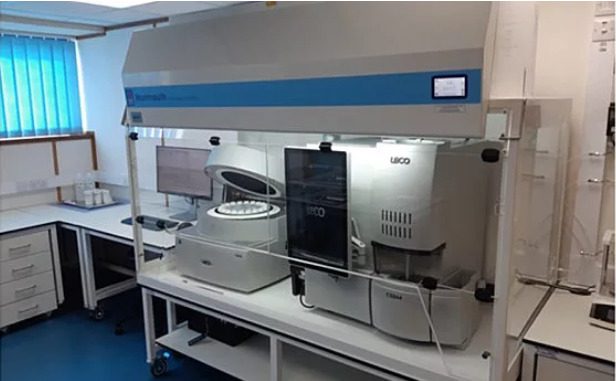In the recycling world, Catalytic Converter is an emerging industry that is eco-friendly, profitable, and sustainable for the environment. However, the industry development and the success of specific businesses depend on the accurate and credible evaluation of the precious metals included in used converters.
The outlook of the catalytic converter market looks promising to investors. Many financiers are willing to invest in this growing and innovative market.
With improved product standards, Catalytic Converter market trends and increased lab and field tests are becoming a source for market development. Industry tycoons are taking an interest and grouping their partners to participate in this sector’s refinancing.
Before going into deep discussion, let’s glimpse what a catalytic Converter is and how it works.
What is a Catalytic Converter?
Catalytic Converter devices help decrease the toxic emission of pollutants from vehicles’ exhaust gases into the atmosphere. In this global warming era, it is the most requested technology.
Although Automobiles have made our lives easier, it is well known that they also harm our environment by causing global warming.
Exhaust emissions have serious negative effects on both human health and the environment. Also, these gases contaminate the air.
We all know how much is a catalytic converter worth. Catalytic converters have been significantly eliminating the release of hazardous gases into the environment for the past many years.
Catalytic Converters are cylindrical with a honeycomb structure from the inside. It is made up of Platinum (Pt), palladium (Pd), and rhodium (Rh) which are the transition metals (PGMs) that are coated across the surfaces of these converters.
When unburned exhaust fumes residue touches the uppermost catalytic layer, it gets oxidized and neutralized by the O2 or oxygen in the exhaust fumes residue.
Exhaust fume residue includes gases like Carbon monoxide (CO), Nitrogen Oxides (NOx), and Hydrocarbon (CH). Although PGMs are very valuable metals, recycling catalytic converters has become an economical and practical method to get fresh and cleaner air.
With the correct processing and analysis of the Catalytic converter procedure, PGMs can achieve a 2nd or even 3rd life and be recycled into a new Converter.
Recycling these components is smart to encourage sustainable, profitable, and healthier air for the environment because 40% of all new catalytic converters are made with reprocessed PGMs.
Recycling Catalytic Converter:
In this advanced world, recycling companies try their best to reuse the material and put lots of effort into throwing waste and garbage out of landfills.
Therefore, we all understand the importance of recycling in our surroundings, and it must be done whenever possible; nothing is more advice than catalytic converters. However, there are various benefits too.
Dealers of new and used cars, trash yards for cars, muffler shops, and auto repair shops all end up with old catalytic converters.
The problem is that the platinum in your used catalytic converters isn’t broken down into neat, manageable pieces you can take out and sell.
A recycling company must use specialized tools to extract and isolate platinum from the catalytic Converter’s internal honeycomb.
It is also necessary to acknowledge that metals in catalytic converters are made not to be dangerous when left unchecked. However, they are hazardous since the ceramic bricks are exposed when unsealed. It’s advisable to leave it to the professionals with the proper training and safety gear.
The safest and most effective way to recycle catalytic converters is to bring them to a scrap metal yard, a metal recycling service, or to arrange for pickup.
Need to Recycle Catalytic Converter:
-
Recycling Catalytic converters help to preserve natural resources.
Metal mining is an energy-intensive and time-consuming process that requires expensive procedures, mining, and dangerous chemical, making it highly risky.
These precious metals are extracted from tunnels and require high drilling power, and in the end, you’ll end up with a very less amount of metals. So forget that and adopt the recycling process, giving you ample platinum with little effort and money. Mining harms the environment greatly, so our atmosphere will be safe from catalyst converters.
-
High prices of Catalytic converters.
When you decide to trade a catalytic Converter to a recycling firm or dealer, you’ll get a handsome amount of money in return. PGMs are high-end metals whose prices keep getting high. Their price per gram is more than $600.
Global Future Market of Catalytic Converters:
According to Global Statistics: The market size of the Recycling Catalytic Converter was valued at $511.92 million in 2021, whereas it is expected to reach $596.69 million by 2027.
Industry Research Future (MRFR) claims that the market will expand at a CAGR of about 7.5% in its most recent analysis of the catalytic converter market. Despite the COVID-19 outbreak, the market for catalytic converters had seen a pleasingly steady increase in revenues.
Due to actions implemented by industry players at the early stages of the epidemic, the catalytic converter market continued to expand steadily throughout the year 2020. By embracing the full transformation process, moving ahead, and speeding up the restructuring in 2020, these firms showed that they could support the automobile industry as strong and system-relevant partners.
Conclusion:
There will be catalytic converters for a very long time. Production of cleaner-burning gasoline vehicles or an increase in the number of hybrids seems to be the most effective answer as governments impose higher emissions requirements. In both scenarios, the catalytic converters’ journey appears to be long.


































